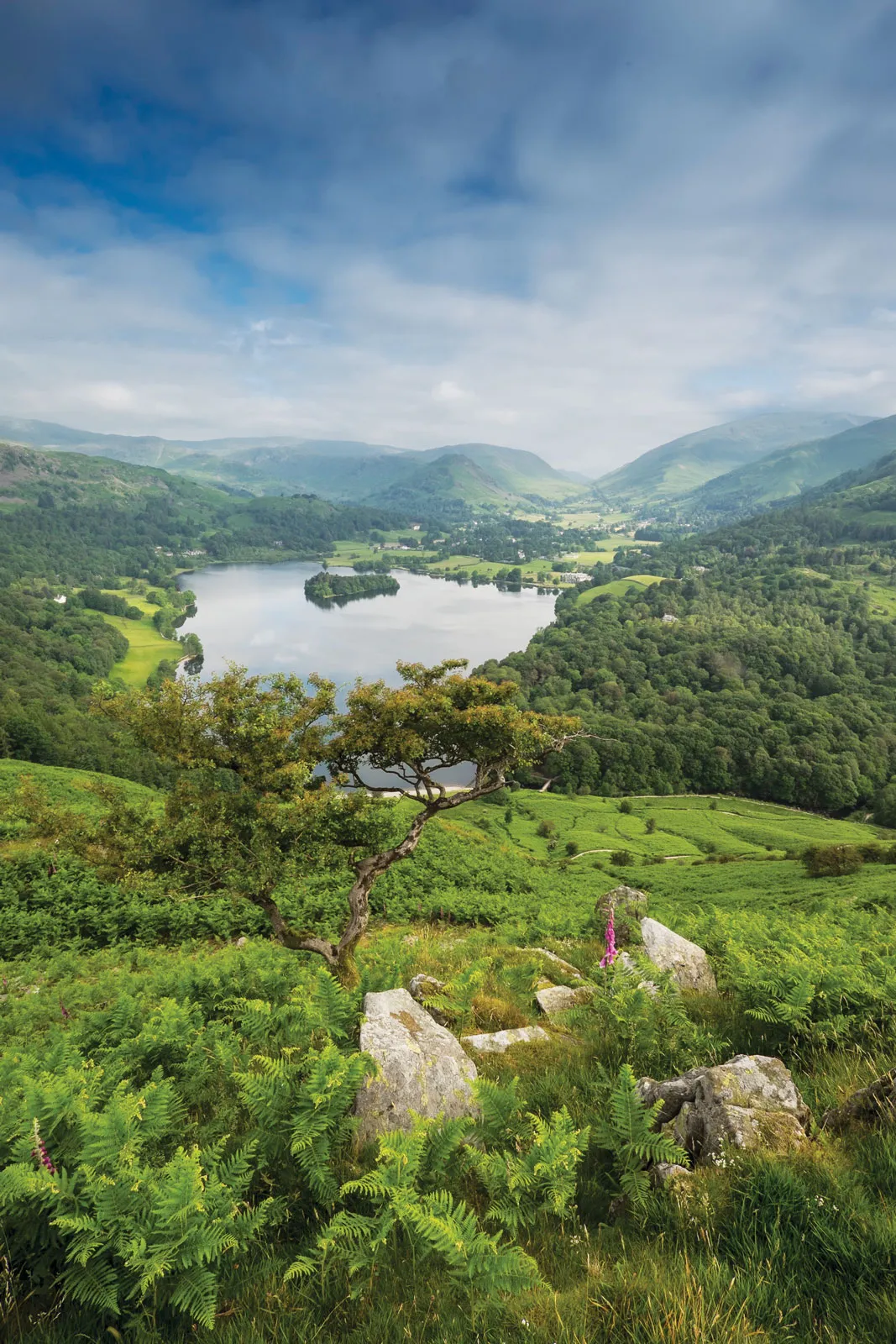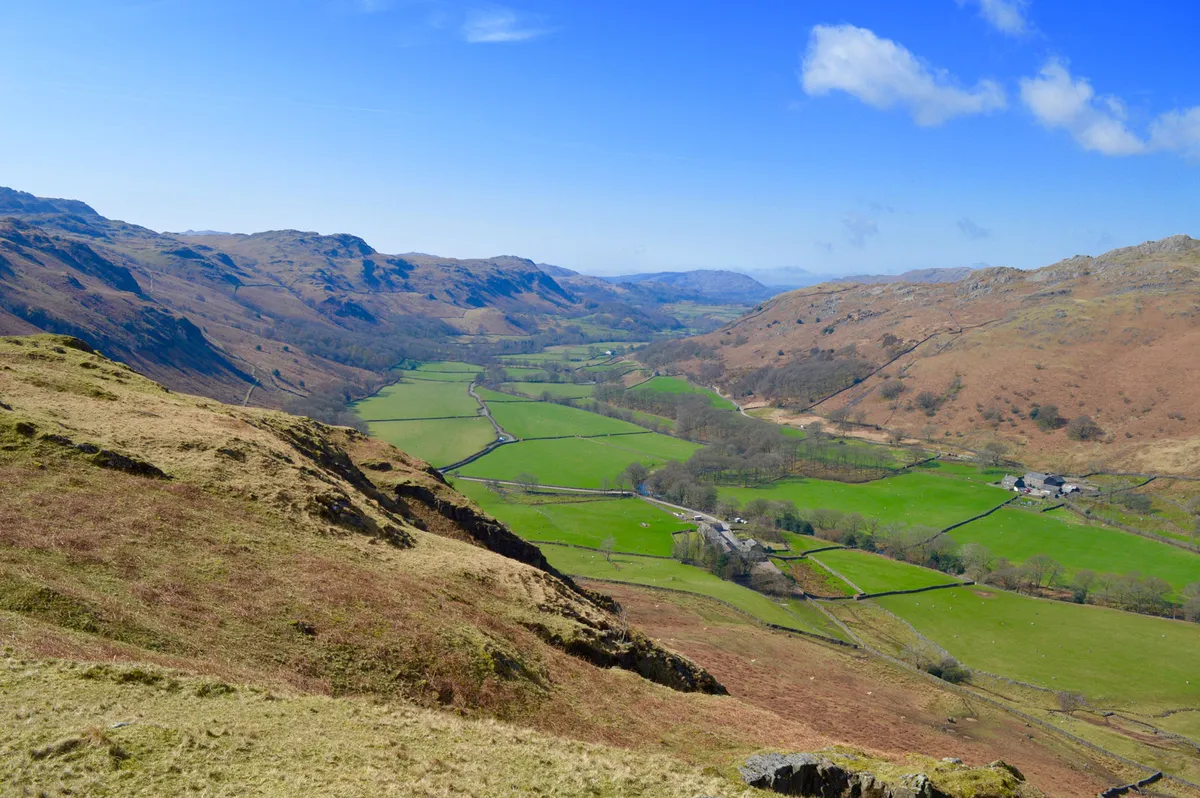The Lake District, eh? A place so special that last year the national park attained UNESCO World Heritage status. But with 912 square miles of fells, meres (call them lakes at your peril), footpaths, country houses, museums, galleries, pubs, restaurants, tearooms, cafés and myriad other attractions, it can be rather overwhelming. I can’t possibly experience it all in a week, but by spending each day getting to know a distinct area, I hope to spend more time exploring and less time dashing about like a gadfly. So I hop on a train, leave the city behind, and begin my Lakeland adventure.
Here's how to explore the Lake District in just seven days...
Day 1 Grasmere

I celebrate my arrival in the Lake District with lunch at Grasmere’s Mathilde’s, the Heaton Cooper Studio’s light and airy café. Wholesome Scandinavian dishes are its thing so I indulge in a delicious vegetarian smørrebrød. After a turn around the gallery, I join a queue of customers drawn to the irresistible aroma issuing from the tiny Grasmere Gingerbread shop, an institution since Sarah Nelson began selling the sweetmeat here in 1854.

Pockets filled, I make my way to Dove Cottage, former home of William and Dorothy Wordsworth. Beautifully preserved and full of Wordsworthiana, it feels as if either sibling might walk in at any moment. Following in their footsteps, I stride outside and up to the summit of the neighbouring fell, Loughrigg, enjoying cracking views down Grasmere on the way. Descending, I complete a circuit of Rydal Water, taking in Rydal Mount, the Wordsworths’ final home. When the stars come out by twos and threes, I hie away to the Traveller’s Rest for a warming three-bean chilli and a melon sorbet that melts in the glow of a blazing fire. And just a five-minute walk away is Broadrayne Farm, my cosy pod, and bed.

Day 2 Eskdale

A female sparrowhawk watches me with elaborate nonchalance as I go to pick up a mountain bike in the picturesque village of Boot. The bicycle’s reassuringly fat tyres speed me down the muddy track of the Eskdale Trail, the 8.5-mile cycle path that runs nearly the length of this quiet western Lakeland valley to the sea at Ravenglass. Freewheeling down the trail’s solitary hill to the rosy-hued Muncaster Castle, I find myself ducking to avoid too close an encounter with a Verreaux’s eagle owl, one of the many large birds in the castle’s conservation programme.

The day takes a decidedly Roman turn when I am shown a mysterious Latin-engraved stone recently unearthed in the castle grounds. Five minutes’ further pedalling leads me to the ruins of a Roman bath house near Ravenglass. The trail ends at the coastal terminus of the Ravenglass and Eskdale Railway, whose tiny narrow gauge trains now carry bicycles. After a look in at the station’s jaunty museum and Ratty Arms pub, I let the train rattle me back up the valley to Dalegarth. But the Romans have the last say. Climbing out of Eskdale, I come to the impressive remains of Hardknott Fort. The bird’s-eye view the empire’s soldiers once had of the valley is now the preserve of silver-grey Herdwick sheep, grazing contentedly around the praetorium.
Day 3 Keswick and Honister

Cumbria is famous for having a lot of weather, much of it prone to descend on the county in torrents. The day being quite ‘weathery’, I am more than happy to breakfast at the Lingholm Kitchen in Portinscale and gaze out of a huge picture window into their walled garden. Neighbouring Keswick is a dependable wet-weather haven with its museums, art galleries and mind-bending World of Illusions and, after a pleasant shufti around, I head along Derwentwater and up to the wild volcanic Honister Pass.
Honister is England’s only working slate mine and a brand new tour vividly tells its story through the eyes of an actual lifelong miner who started his career at the age of eight. The route taken by many miners to the summit of the fell is now replicated by a via ferrata. Which was why I find myself with a guide called John scaling 305m (1,000ft) of the fell by clambering ladders, shuffling along wires, grappling with a rope net and inching my way over a frankly terrifying tightrope affair that bridges a chasm. It is entirely exhilarating. And rather than having to work down the mine afterwards, I have a soft bed and hot meal waiting for me in the valley at the Leathes Head Hotel. At times the modern world does win out over the past.
Day 4 Buttermere and Loweswater

Beautiful Buttermere is the perfect place to devote a whole day to an 11-mile hike around the fells and meres. Under very welcome azure skies I walk out of the village, skirt Buttermere’s shore, and head straight up Red Pike. It’s a climb guaranteed to get the heart pumping and the views at the top are nothing short of sensational: Scotland to the north, the mountains of the Isle of Man to the west, fells in every direction, and Ennerdale Water, Crummock Water and Loweswater below.
I plunge downhill to take in the Scale Force waterfall before heading along Mosedale. This is one of the lesser-walked Lakeland routes, so I have the sun-drenched river valley all to myself. At its foot is the Kirkstile Inn, which provides a long lingering alfresco lunch. My return to Buttermere is a gentle affair, a stroll along Crummock Water; a rest on a decorous small peninsula called Low Ling Crag to view the surrounding fells; and a chat at close quarters with a lionhearted roe deer. And so at last to Buttermere, which sports two pubs, a brace of tearooms and a little church to nose around – tiny villages don’t come much better than that.
Day 5 Windermere and Grizedale

You can’t visit the Lakes without pottering about on at least one. The self-drive electric boat I hire at Bowness takes me quietly around Windermere’s enchanting array of islands to commune with the thousand or so swans, geese, ducks and cormorants who live there year-round. Wray Castle sits on the mere’s western shore, and a breezy open-top bus ride to Ambleside, followed by a cruise across the water, is the way to arrive there in style. I learn about the inspirational Margaret Dawson, who battled to bring the mock fortress into existence, and the scientific achievements of local hero Beatrix Potter, gifted storyteller and expert mycologist.
One lakeside picnic later and I am tearing up cinder tracks and plunging down rocky heart-in-mouth paths on a rented mountain bike at nearby Grizedale Forest. The huge Forestry Commission site sports over 30 miles of cycle trails to suit everyone from wobbly beginners to two-wheeled titans, and is peppered with 50 sculptures. Never have I become more mud-splattered while admiring art. I get full value from my ginormous wooden bath at The Dome House, Cumbria’s most extraordinary B&B.
Day 6 North-east Lakeland
A day of indulgence: a trio of houses-and-gardens in an area most tourists rush through without stopping. My first port of call, Dalemain, has multiple claims to fame. A Norman pele tower that grew into a fine mansion, it has a charming three-acre garden on the Dacre Beck; an Elizabethan café; the ghost of a former servant walking its corridors; and every March hosts the rather brilliant World’s Original Marmalade Awards (and yes, I buy a jar of the official Best Marmalade in the World).
I sally forth to Lowther Castle for a café lunch amid the vast ruins of a gothic revival country house, whose historic gardens were abandoned and lost in 1936, but which have recently been recovered. Any child would wish to play in the immense adventure playground – a magical reconstruction of the castle deep in the woods.

At near neighbour Askham Hall, the 12-acre Grade I-listed kitchen gardens are a delight and its gourmet Kitchen Garden Café is, rather unusually, lodged in a cowshed (it’s fantastic). Some of the produce grown here ends up in my superfood salad that evening at The George & Dragon, Askham Hall’s comfortable pub in nearby Clifton.
Day 7 Ullswater

My final morning sees me sailing the length of Ullswater from its northern tip at Pooley Bridge. Raven, a steamer built in 1889 (though diesel-powered since the 1930s), is surprisingly nippy, though not as quick as Donald Campbell’s 202mph water-speed record set here in 1955. From the upper deck I enjoy 360-degree views of the fells, with mighty Helvellyn scything into the sky.
At Glenridding, I jump out to meet Steve at the Glenridding Sailing Centre for a taster session on Ullswater in a russet-sailed Lune whammel, a traditional fishing boat used on the nearby River Lune. I’ve never sailed a dinghy before, but Steve soon has me watching my jib, trimming my mainsail and heaving to in ways that makes me feel not quite such a landlubber.
Hopping on another steamer, I land at Aira Force to embark on six miles of the Ullswater Way, the waymarked footpath around the mere. This takes me along the dramatic Aira Force waterfall, up and over Gowbarrow Fell, through woodland in which I all but trip over an enormous hare, over Maiden Castle Iron Age fort and down into Pooley Bridge and the 1863 Bistro for a farewell dinner.
I am amazed at how much I’ve been able to see and do in the Lake District by having seven local days out. As I make my way to the station, I make a vow to come back and enjoy seven more.
Book your own holiday in the region with our selection of the best cottages in the Lake District
Main image: Buttermere means 'the lake by the dairy pastures'. This beautiful and accessible body of water is 2.4km long and 23m deep/Credit: Grant Finley
